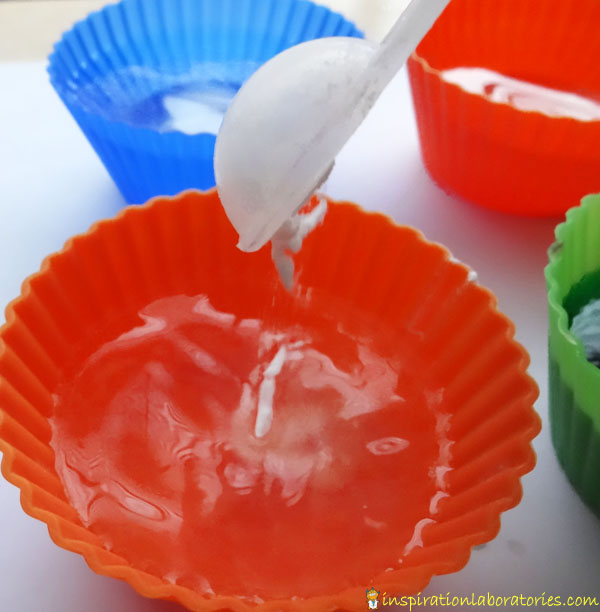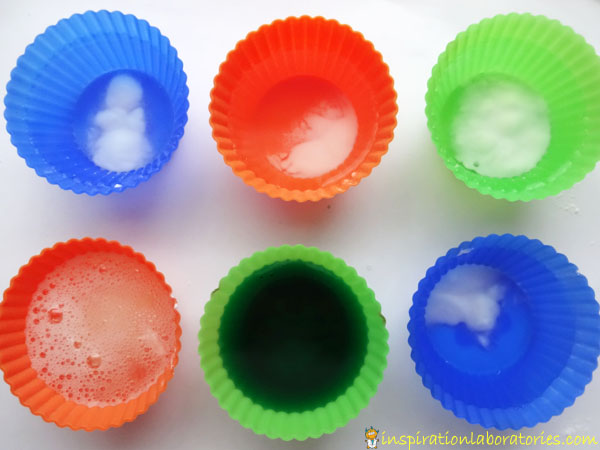Valentine Candy Science: Candy Heart Ingredients Experiment
This is a continuation of yesterday’s candy heart investigation. This candy science experiment tests which ingredient in candy hearts reacts with baking soda.
Valentine Candy Science: Candy Heart Ingredients Experiment
From yesterday’s investigation, we learned that candy hearts react with baking soda and water to produce bubbles. That leads me to today’s experiment. Which ingredient in the candy hearts reacts with baking soda?
By reading the ingredient list, I knew which one was the cause. I thought it would be a fun experiment for kids to determine the answer on their own. I gathered up most of the ingredients listed on the bag. Here is the listed ingredients from the candy hearts we have: sugar, corn syrup, dextrose {another kind of sugar}, gelatin, vegetable gums, citric acid, food coloring. I’ve skipped the gelatin and vegetable gums as I don’t have any on hand. Lemon juice contains citric acid, so we used lemon juice in place of citric acid.
Materials:
- containers {we used silicone cupcake liners}
- baking soda
- water
- sugar
- corn syrup
- glycerine
- lemon juice
- food coloring
Procedure:
- Place a teaspoon of each of your candy heart ingredients {sugar, corn syrup, glycerine, lemon juice} into separate containers. Add a drop or two of food coloring to another empty container. {You could test different colors if you wish.}
- Add a 1/4 cup of water to each container. {Sometimes things need to be dissolved before they can react.}
- Add a 1/4 cup of water to an empty container. {Just to be sure the baking soda won’t react with only water.}

- Make a prediction. What will happen when you add baking soda to the containers?
- Add a 1/2 teaspoon of baking soda to each of the containers.

- Observe what happens.
You could also add the baking soda to each of the ingredients without adding water and see what happens.
And if your child is like my son, he will continue adding baking soda to each of the containers until there is no more baking soda. Then, he will ask if he can mix everything together. Sure. Why not?
Our Observations
The picture below shows what we observed for each of the candy heart ingredients.
The baking soda only reacted with the lemon juice. Is this what you expected?
The Science Behind It
Baking soda is a base and lemon juice {citric acid} is an acid. The two ingredients react together much like baking soda and vinegar do producing carbon dioxide, water, and a salt. {The salts produced are different in each reaction.} The bubbles you see are carbon dioxide gas being formed.
More Valentine’s Day Ideas
- Check out all of our ideas for candy science with valentine hearts.
- Give baking soda and vinegar a Valentine’s Day theme with this frozen vinegar hearts idea.
- Look through our past Valentine’s Day ideas here. There are more activities still ahead.
Connect with Inspiration Laboratories on Twitter, Google+, Pinterest, or Facebook . You can also subscribe to posts by e-mail.
Linking up here.



Leave a Reply